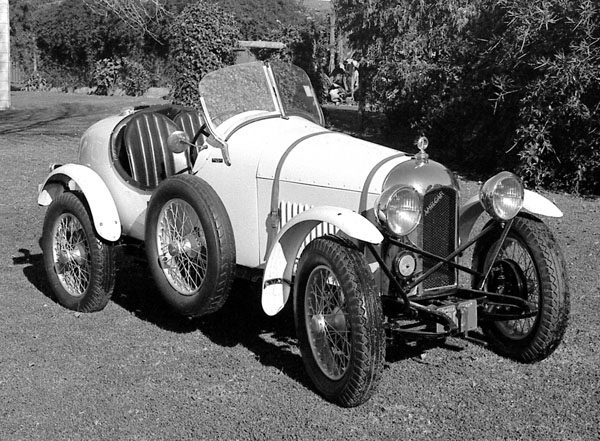While it didn’t make the 100 Cars of the 20th Century listing the Amilcar would appear on many lists of outstanding or classic cars. Typical of small sports cars which were very popular in England in the 1920s and 1930s the Amilcar earned a reputation for racing performance, an important criteria in the 1920s. Much of the design work and trial and error testing of that period was beneficial in laying the groundwork for later designs.
The Amilcar was the brainchild of two French engineers who worked for Fernand Lamy and Emile Akar, the owners of a small French company, Le Zebre. With this funding they established a new company which they named Amilcar using letters from their benefactors names.
The first car they produced used a side-valve 904 cc engine developed from one designed by Jules Salomon, who was previously the designer at Le Zebre before leaving to join Citroen. Andre Morel, one of the two designer principals, raced this car in the first Bol d’Or 24-hour race and won, beating two Salmsons. This event set up a rivalry which lasted throughout the 1920s. After this it was decided that an improved engine design was necessary if they were to stay in front.
The new in-line six-cylinder engine gained its inspiration from other engine designs of that time and was similar in many respects to the 1923/4 Sunbeam engine. It had two valves per cylinder operated by twin overhead camshafts which were gear driven from the rear of the crankshaft. Rather than use a stock model supercharger Amilcar chose to develop its own Rootes-type supercharger. After producing several versions they finally settled on a design that raised the normal output of 56 kW to 62 kW for the supercharged version.
The chassis of this model was not based on any other designs but was their own conception. It used an undertray to add stiffness while the body was quite conventional but not brilliant in appearance. This car was designated the model CO, which was later modified to the MCO with a new single-seater body.
Suspension front and rear was not independent but had front and rear axles mounted on semi-elliptic springs. Front and rear drum brakes were cable operated. Although these cars gained some competition glory the Amilcar management really wanted to enter Le Mans events and this called for a production run of 50 cars.
To achieve this the CO was further modified and called the C6. The cast iron engine block was modified to a 56 mm bore and 74 mm stroke giving a capacity of 1094 cc. With a compression ratio of 5.0:1 power output was 46 kW. A four-speed manual non-synchromesh gearbox drove the rear wheels and the car was capable of 165 km/h accelerating from 0 to 96 km/h in 12 seconds.
Unfortunately at this time the world was moving towards the great depression and works participation ended. Lamy and Akar wanted their money returned so a new company was incorporated as the Societe Anonyme Francais d’Automobiles.









